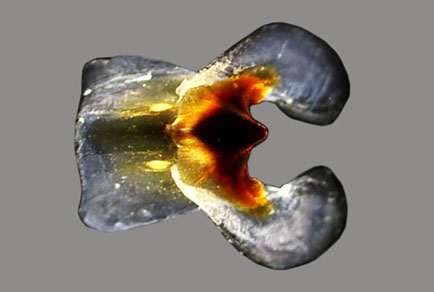Abstract
Sepiolidae play an important role in the marine ecosystem as their beaks occur frequently in the stomach contents of whales, sword fish and tuna. To enable the estimation of body size and biomass, the biometrical measurements of upper (5 dimensions) and lower (5 dimensions) beaks of sepiolid specimens were plotted against both mantle length and body weights of intact ani-mals of eight species of Sepiolidae (Sepiola intermedia, Sepiola robusta, Sepiola steenstrupiana, Sepietta oweniana, Sepietta neglecta, Rossia macrosoma, Neorossia caroli and Heteroteuthis dispar) from the coasts of Turkey. Significant differences observed among the beak ratio means and structural characteristics are used to construct a key for upper beaks of the eight spe-cies. Some upper (hood, crest and basal lengths) and lower beak (wing, basal and crest lengths) measurements were found to be particularly useful for estimating the mantle length of the species examined. The results of the present study, especially data for the lower beaks of specimens, were qualitatively compared with those of the previous studies carried out in different zoogeo-graphic regions.

